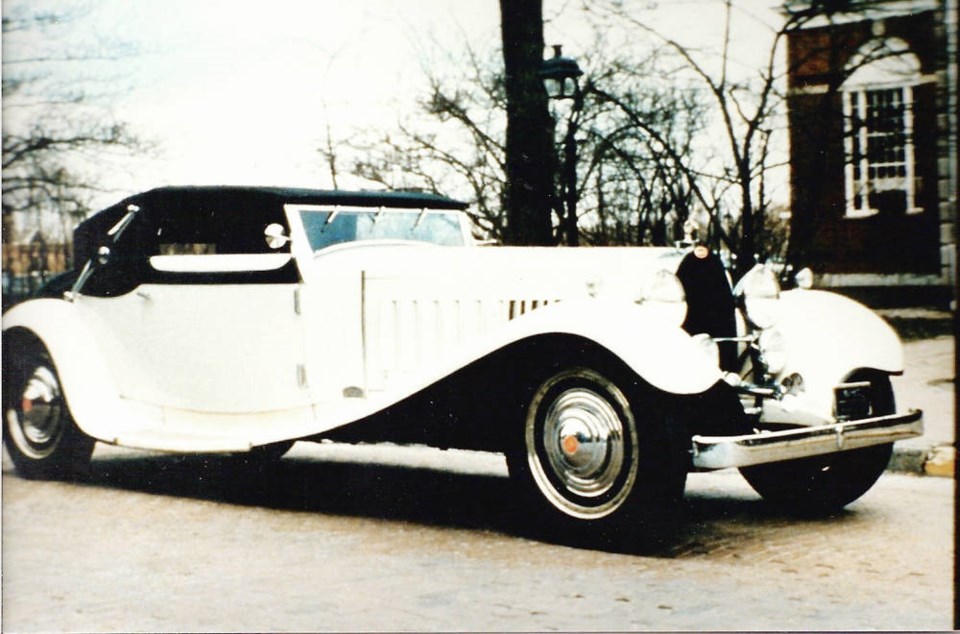There have been some magnificent automobiles throughout history, cars like America’s Duesenberg J/SJ and Cadillac V-16, Britain’s Rolls-Royce Phantom III, Spain’s Hispano-Suiza V-12, Belgium’s Minerva AL, Germany’s Mercedes-Benz 540K, and Italy’s Isotta-Fraschini 8A.
But grand as they were, none carried quite the cachet of the Bugatti Royale Type 41, built in France by Ettore Bugatti, an exacting and somewhat eccentric Italian artist-cum-engineer. It was to be a grand carriage created for royalty.
Bugatti was born in Milan, Italy in 1881 and studied architecture and art in Milan. Recognizing that younger brother Rembrandt had superior artistic talent he transferred to mechanical design; it was not in Ettore’s nature to be second best at anything.
Following employment with several motor vehicle manufacturers, Bugatti opened an automotive engineering consultancy. While working for Deutz in Cologne, Germany he constructed a light car of his own design in 1909.
His reputation and this car brought sufficient backing to finance his own automobile manufacturing company. He established it in 1909 in a former dye works in the town of Molsheim, Alsace Region of north-eastern France.
Although Bugattis featured intricate and unorthodox engineering, they were highly effective. The Bugatti marque became famous when Ettore entered a small four cylinder Bugatti in the 1913 French Grand Prix. Running against racers with much larger engines, its superior road holding captured an astonishing second place. M. Bugatti’s cars became renowned for their tenacious cornering.
During the First World War Alsace-Lorraine was a battleground so Bugatti relocated and designed aircraft engines for the French government. One was a highly unusual 16 cylinder type comprised of two straight-eights mounted vertically (not in a vee) on a common crankcase with their crankshafts driving a shared output shaft. It had limited success.
When peace came, Bugatti returned to Molsheim and his road and competition cars continued excelling in competition. By 1924 he had designed the small, spare, Type 35 with a beautifully sculpted, jewel-like 2.0-litre straight-eight engine. This imaginatively engineered piece of automotive art became the most successful racing car of all time. During the mid-1920s Type 35s won over 1,000 races, an amazing accomplishment for a tiny firm.
The 1920s and ’30s were Bugatti’s golden years, the period when the Type 35 reigned and the mighty Type 41 Bugatti which was to be the culmination of his auto building enterprise, was conceived.
The Type 41 Royale prototype was completed in 1927 with a 4,572 mm (180 in.) wheelbase; this would be reduced by 254 mm (10 in.) when it went into production. The prototype carried a Packard body, later replaced with a custom built body. All Royales would have custom coachwork.
Production Royales had straight-eight engines with bore and stroke of 125 by 130 mm (4.92 X 5.12 in.) displacing 12.7 litres (779 cu in.). A massive 100 kg (220 lb) crankshaft rotated in nine main bearings cooled by water jacketing extending down to crankcase level.
The cylinder head and block were integral and a single overhead camshaft actuated the valves. Horsepower probably approached 300 at no more than 2,500 rpm. This impressive powerplant reposed under a 2,134 mm (7 ft) long hood.
Power went to the rear wheels through a three speed manual transmission in which the all-purpose second gear was direct drive; third was recommended only for high speeds.
The 3,266 kg (7,200 lb) Royale had a 4,318 mm (170 in.) wheelbase, was some 7,000 mm (20 feet) long and had 36 X 6.75 inch tires. Top speed was probably in the 145 to 161 km/h (90 to 100 mph) range, although higher figures have been published. At 113 km/h (70 mph) in top gear the big eight was loafing at about 1,000 rpm, slower than any modern car.
By the time Royale production was completed in 1931-32 the Great Depression was on. This affected sales, and after six were built (a seventh is rumoured) plans for the run of 25 were abandoned. Although the Royale was apparently created for European royalty, no royalty ever bought one.
Some of the extra Royale engines were fitted to rail cars which attained speeds up to 190 km/h (118 mph). One reportedly broke the Paris to Strasbourg speed record.
That the Bugatti Royale was not a financial success must have disappointed Ettore Bugatti after he had lavished all his prodigious talents on producing what he considered the world’s finest motor car. Those six Royales conceived in the golden twenties and disregarded in the penurious thirties, are almost priceless collectibles today.
The Bugatti name has been revived and is now owned by Volkswagen whose modern Bugattis are outrageously powerful and frighteningly fast.
Ettore would be proud of them. He died in 1947, but in the hands of its German owner the Bugatti spirit lives on.



